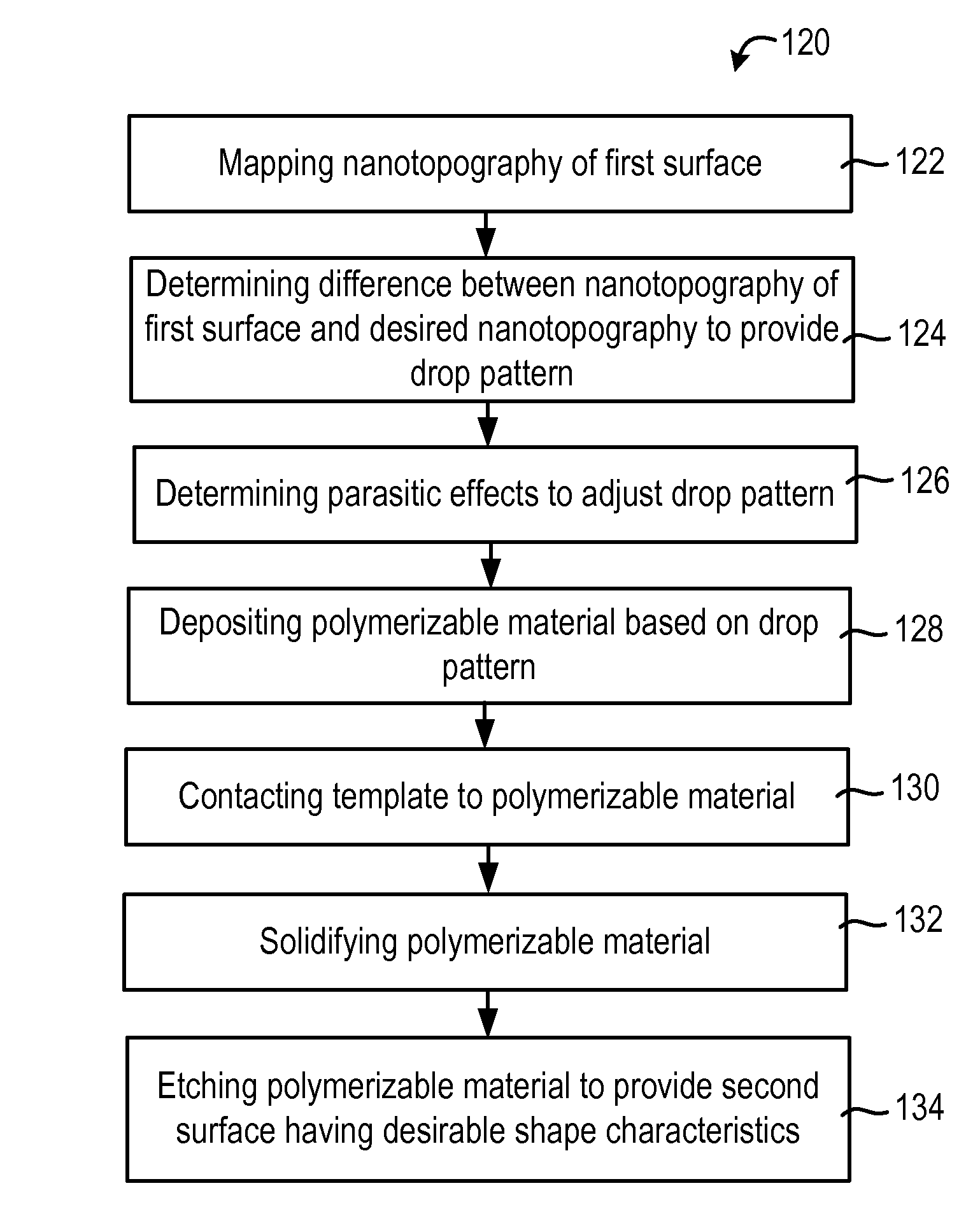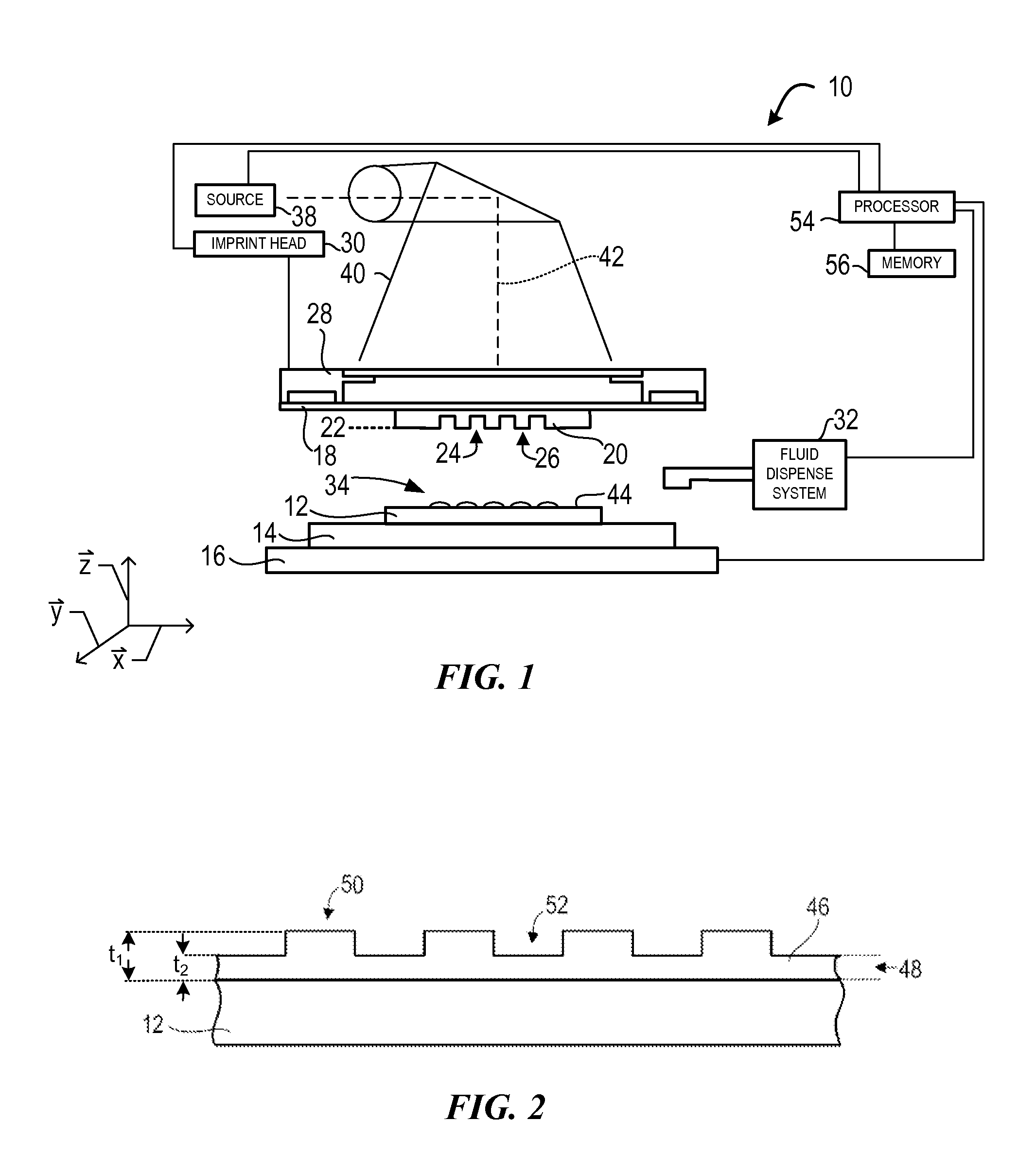Adaptive nanotopography sculpting
a nanotopography and sculpting technology, applied in the field of adaptive nanotopography sculpting, can solve the problems of compromising the quality of planarization, limiting the degree of planarity attainable by current schemes, and increasing the complexity of the planarization process
- Summary
- Abstract
- Description
- Claims
- Application Information
AI Technical Summary
Benefits of technology
Problems solved by technology
Method used
Image
Examples
Embodiment Construction
[0021]Referring to the figures, and particularly to FIG. 1, illustrated therein is a lithographic system 10 used to form a relief pattern on substrate 12. Substrate 12 may be coupled to substrate chuck 14. As illustrated, substrate chuck 14 is a vacuum chuck. Substrate chuck 14, however, may be any chuck including, but not limited to, vacuum, pin-type, groove-type, electromagnetic, and / or the like. Exemplary chucks are described in U.S. Pat. No. 6,873,087, which is hereby incorporated by reference.
[0022]Substrate 12 and substrate chuck 14 may be further supported by stage 16. Stage 16 may provide motion along the x-, y-, and z-axes. Stage 16, substrate 12, and substrate chuck 14 may also be positioned on a base (not shown).
[0023]Spaced-apart from substrate 12 is a template 18. Template 18 may include a mesa 20 extending therefrom towards substrate 12, mesa 20 having a patterning surface 22 thereon. Further, mesa 20 may be referred to as mold 20. Alternatively, template 18 may be for...
PUM
| Property | Measurement | Unit |
|---|---|---|
| roughness | aaaaa | aaaaa |
| roughness | aaaaa | aaaaa |
| roughness | aaaaa | aaaaa |
Abstract
Description
Claims
Application Information
 Login to View More
Login to View More - R&D
- Intellectual Property
- Life Sciences
- Materials
- Tech Scout
- Unparalleled Data Quality
- Higher Quality Content
- 60% Fewer Hallucinations
Browse by: Latest US Patents, China's latest patents, Technical Efficacy Thesaurus, Application Domain, Technology Topic, Popular Technical Reports.
© 2025 PatSnap. All rights reserved.Legal|Privacy policy|Modern Slavery Act Transparency Statement|Sitemap|About US| Contact US: help@patsnap.com



